If you have a brand new garage and are looking to regulate its temperature, insulation can be helpful. And in some locations, insulating your garage will be mandatory by the local building codes. But how do you insulate garage walls that are already finished? We have researched this to bring you the answer.
The most common method used to insulate finished walls in a garage is blown-in insulation. Here are the steps to do it:
- Find the stud locations
- Drill access holes
- Install the insulation
- Seal the access holes
Before deciding to install insulation in your garage, you'll need to measure the space of the walls to ensure that you purchase the right amount of insulation. The ideal type of insulation to use will depend on your budget, preference, and any applicable local building codes. Continue reading to learn how to install insulation on your finished garage walls.
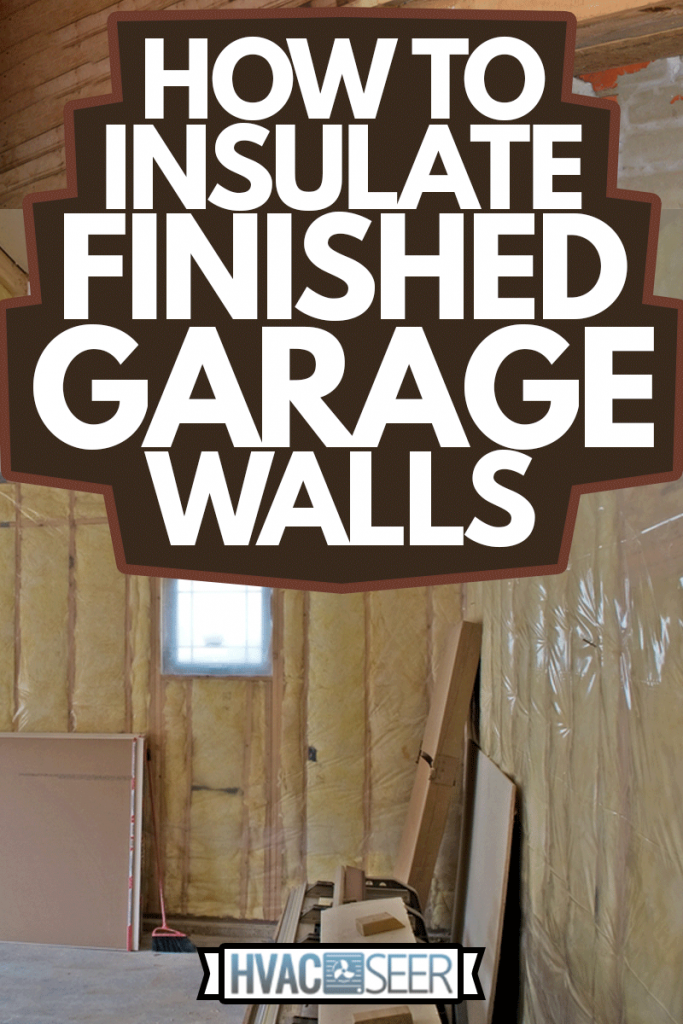
Steps To Insulate Finished Garage Walls
Things you'll need:
- Blown-in insulation
- Blower machine
- Drill with a hole bit
- Stud finder
- Drywall repair kit
- Paint primer
- Interior paint
- Protective suit
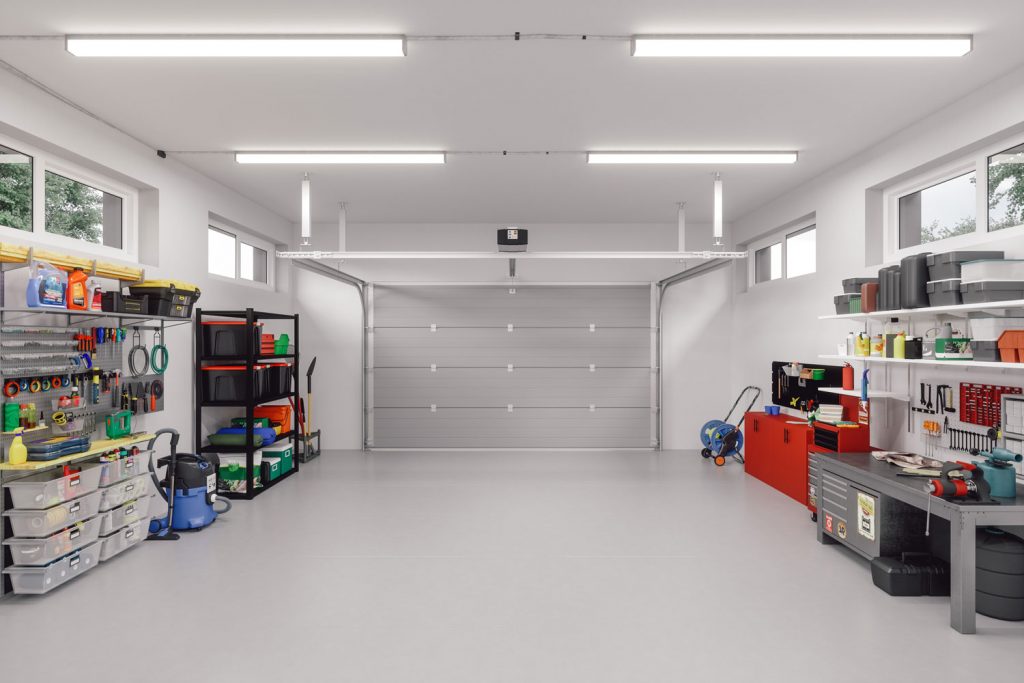
1. Find the stud locations
After you have gathered all of your tools and equipment, you'll need to first find the stud locations using a stud finder. This will prevent you from drilling access holes directly on top of the studs holding the walls in place.
Start in the upper left corner of the first wall that you plan to insulate, and work your way to the right, marking each location with a pencil.
The number of holes needed will depend on how large your garage is (most garages in the U.S. are around 20 x 20 feet). Note that the wall studs will typically be anywhere from 16 to 24 inches apart.
Check out this stud finder on Amazon.
2. Drill access holes
Next, place a drop cloth beneath the wall that you will be drilling the holes into. This will make the cleanup process much easier. Next, use a drill with a hole bit and create a 2-inch hole in the top portion of the wall at each pencil mark.
Be sure to set the piece of drywall that you remove in a nearby location so that you can reinstall it later. If the piece falls inside the wall, don't fret—you can fill in the area later. Work your way from left to the right, creating an access hole every 3 to 4 feet.
Find this dropcloth set on Amazon.
3. Install the insulation
Next, don your protective equipment. Then place your blower machine in position and ensure that it's close enough to where you can reach the hole with the hose. Then, put the end of the blower hose inside the hole while an assistant turns the machine on.
Be sure to place the hose as far down as possible in the wall. As the wall cavity begins to fill, pull the hose out inch by inch. It's best to go slowly to ensure that the entire wall cavity is tightly packed with insulation.
Have your assistant turn off the machine when you start to feel resistance with the hose. Carefully remove the entire hose and perform this step for each hole on the wall. Repeat the same process for the other three walls.
Buy this protective suit on Amazon.
4. Seal the access holes
After you fill all of the garage walls with insulation, prepare to fill with the holes that you've made in the drywall. If you were able to keep all of the drywall pieces, you can apply adhesives to the edges of the holes and place them back in the wall.
Be sure to let the adhesive dry halfway before placing the pieces back in position. This will prevent them from falling inside the wall and will help them to dry in place faster.
If you weren't able to keep the pieces from falling inside of the wall, simply patch the wall using a drywall repair kit. Then prime the repair areas and paint them.
Find this drywall repair kit on Amazon.
Does insulating a garage keep it cooler?
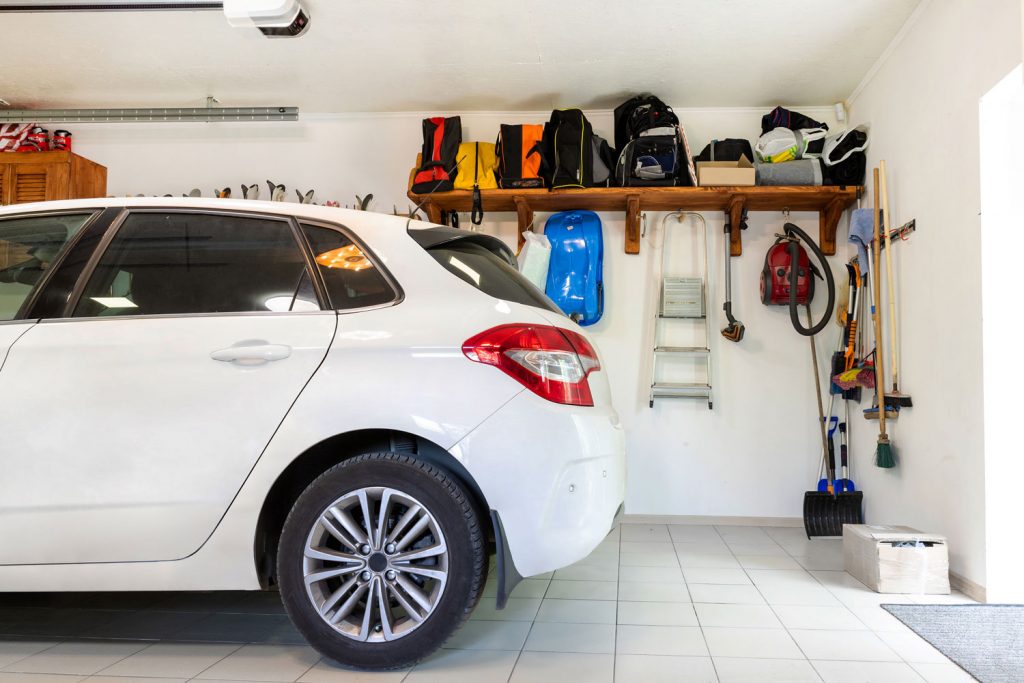
Yes, insulation can reduce the amount of heat transfer taking place inside your garage walls. Even if you simply insulate the ceiling or the walls alone, it can make a difference.
The time of year when this will be most beneficial is in the spring and summer months when the weather is warmer and the skies are clearer. It's also beneficial to add insulation to your garage door. Let's look at a few other ways that you can help to keep your garage cooler.
Let your vehicle cool off outside
During the warmer months of the year, park your vehicle outside before placing it in the garage for the evening. Letting the car cool down for about 15 to 20 minutes and then moving it into the garage can be especially helpful on days where sunlight is strong and temperatures are warmer.
The heat will radiate from your car within minutes, but this won't happen inside of your garage, which can allow the garage to stay cooler on warmer days.
Add fans to the garage
Another inexpensive way to keep your garage cool is to simply add one or two fans. Fans can help with ventilation, and they're much cheaper than installing an air conditioning unit for the space.
You can even use two different fans to help create more airflow in the space. If you use your garage for parking and recreational purposes, keeping a high-powered shop fan will definitely make a difference when you're in there working or hanging out.
Check out this shop fan on Amazon.
Paint the garage with light colors
Light colors help reflect sunlight so that it bounces off the garage walls instead of absorbing heat. This can make a huge difference and keep your garage a bit cooler on the hotter days of the year.
It can also be helpful to choose a garage roof with lighter colors or install a few solar panels on top of it. If you live in the south or western part of the U.S. and have a garage that faces the west, this will definitely make a difference.
What is the cheapest way to insulate a garage?
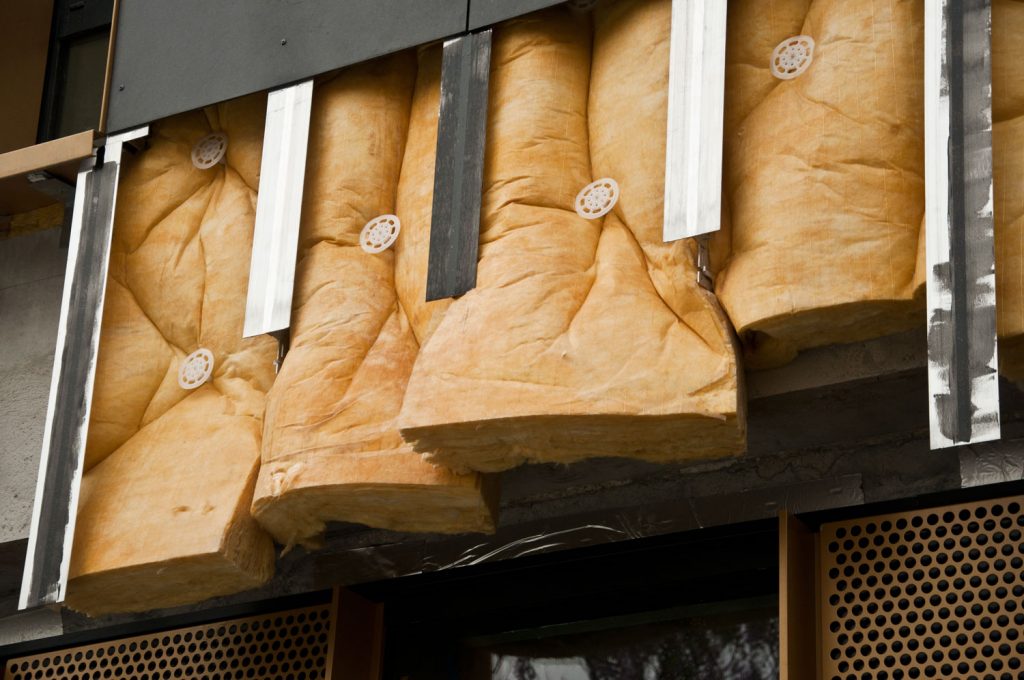
If you're looking to insulate your garage while spending as little money as possible, there are a few ways to do it without sacrificing quality. First, measure the space you plan to insulate in your garage.
For example, are you only looking to insulate the garage walls? Do you plan to insulate the ceiling as well? Have an idea of what you're willing to spend and the areas to cover. Let's look at the most common types of insulation to use on a budget.
Fiberglass batts and rolls
Fiberglass batts and rolls are the most popular insulation type in most homes. Not only are they effective, but they are one of the most inexpensive forms of insulation that you can purchase. On average, plan to spend about $0.30 to $1.55 per square foot for this type of insulation.
And, of course, you will save on contractor costs by installing it yourself. You can easily install fiberglass batts on your garage walls by simply cutting them to size and placing them directly in between the joists.
You'll use the same method to install them on the ceiling, though it's best to use adhesive or staples to secure them in place.
Rigid foam panels
Another inexpensive option would be to install rigid foam panels, also known as polyisocyanurate insulation.
You can use these panels on both the walls and the ceiling, and their installation process is pretty much the same as that of fiberglass batts. You'll need to cut the boards to fit in between the joists, and they'll also need extra security if you plan to install them on the garage ceiling.
Rigid foam panels can be especially effective if you live in colder regions, as they have a higher R-value per inch. The only insulation type that has a higher value per square inch is mineral wool (also known as "Rockwool"), but it is also more expensive.
Do I need a vapor barrier in my garage walls?
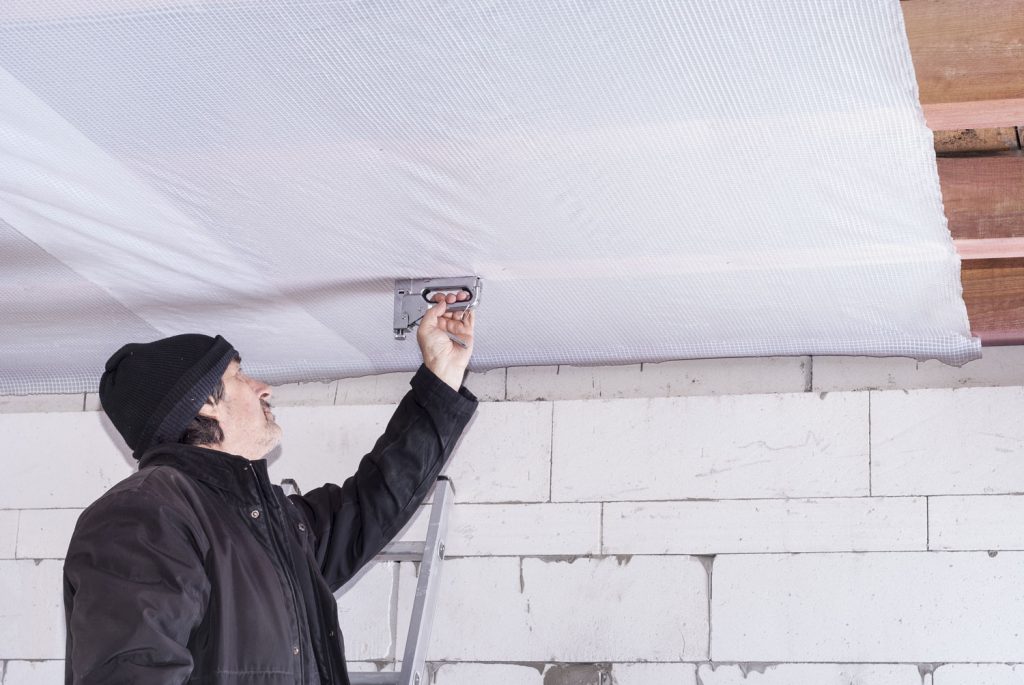
Whether or not you need a vapor barrier in your garage walls depends on the region in which you live. The building codes mandated locally will determine whether or not your garage needs one.
In some locations, a vapor barrier will do more harm than good, and in other areas, a vapor barrier will be required before insulation can be installed. Sometimes, simply installing insulation on the walls will suffice to mitigate moisture issues.
How do you insulate a finished garage ceiling?
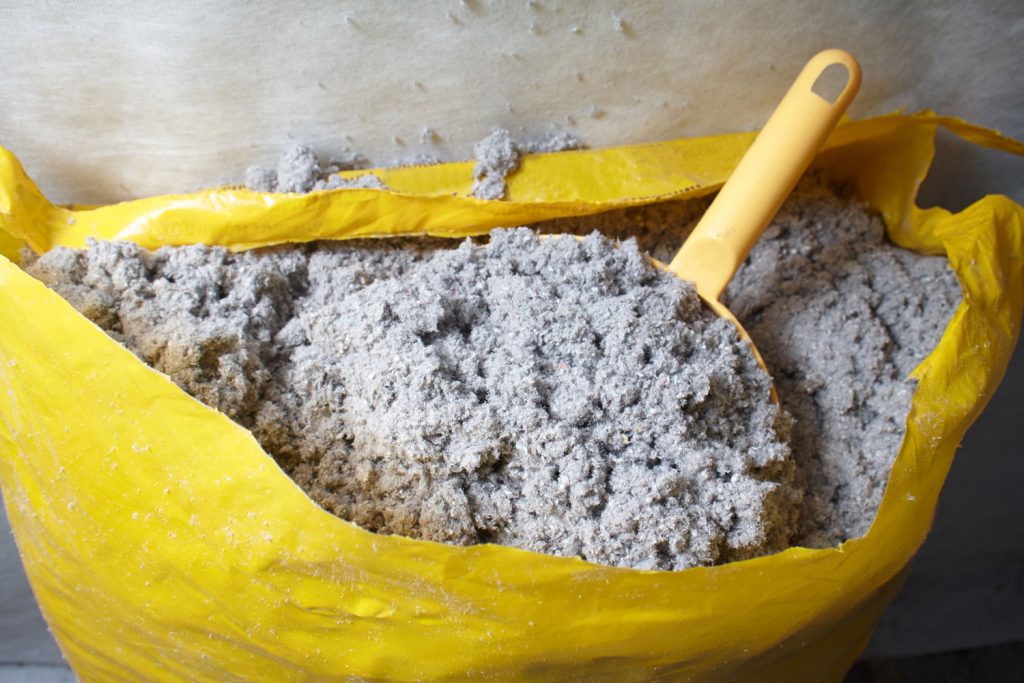
Unless you plan on removing the drywall, the only other way to insulate a finished ceiling in the garage is to use blown-in cellulose insulation.
The only difference with installing the insulation in the ceiling than in the walls is that you won't need it to fill the ceiling to capacity (most garages have chapel ceilings). You will need to angle the end of the blower hose to the side and ensure that you adequately cover the entire ceiling with the correct thickness level.
Wrapping Things Up
If you have a garage that's already finished, you can still install insulation on the walls and the ceiling. Insulating your garage can help to keep it cooler during the warmer months and warmer during the colder months. If you're looking to save money, fiberglass and rigid foam panels will typically be the cheapest.
Before you go, be sure to check out these other posts:
How To Install Mineral Wool Insulation In Ceiling [A Complete Guide]





